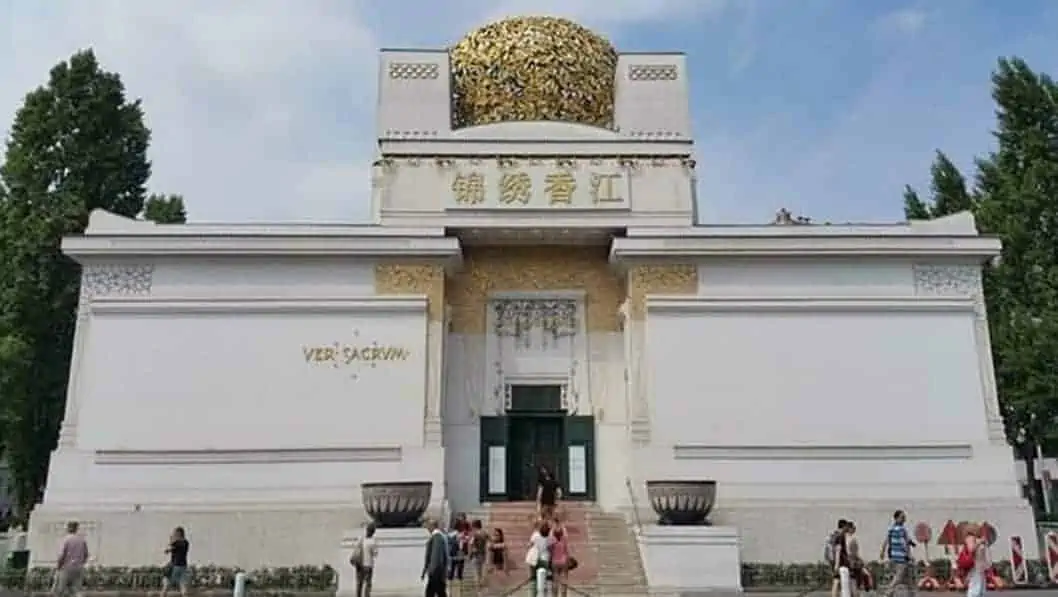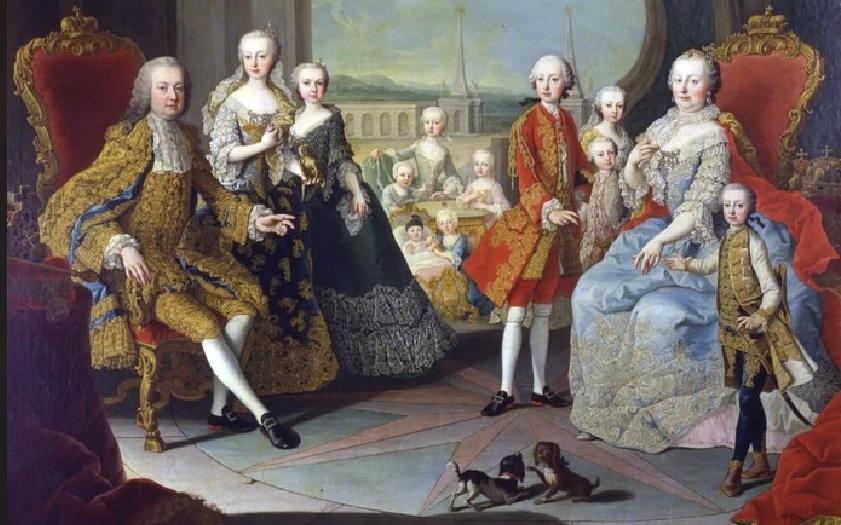What does the motto of the Viennese Secessionists mean?
Which artists played a leading role in the Secession?
What is the purpose of the Secession today?
You can read “Der Zeit ihre Kunst – Der Kunst ihre Freiheit” on the outside of the entrance.
What would Vienna be without the Secession and Gustav Klimt?
The Secession – the exhibition building was mockingly called “Krauthappl” (cabbage) by the Viennese because of its appearance.
On 1,000m2 you can see ever-changing contemporary exhibitions. The Secession also houses a permanent masterpiece by Gustav Klimt: the Beethoven Frieze – a painted setting of Beethoven’s 9th Symphony. It is a 34m long cycle of paintings located in the basement. It was created in 1902, five years after Gustav Klimt and other renowned artists split from the conservative Künstlerhaus. 1897 was a year of upheaval and is considered the birth year of Viennese Modernism. Gustav Klimt left the conservative Künstlerhaus with other artists and founded a new artists’ association under the name of the Secession , of which he also became president. It was a counter-movement to the historicism that characterized the architecture of Vienna’s Ringstrasse. Secession refers to both Viennese Art Nouveau and the modern exhibition building. Other well-known artists of the time were Koloman Moser, Josef Hoffmann, Joseph Maria Olbrich (architect of the Secession), Joseph Hofmann, Otto Wagner and Egon Schiele. Vienna had more inhabitants than today, namely 2 million, and was one of the intellectual and artistic centers of Europe. There was a spirit of optimism in the country like never before. Klimt, Schiele, Moser and Wagner contributed significantly to this. Gustav Klimt became world-famous with his painting “The Kiss“. Egon Schiele and the “Portrait of Wally Neuzil” are internationally renowned. Otto Wagner’s buildings are unique in Vienna, from the Postsparkasse to the Stadtbahn and its stations to the church at Steinhof. No one is more closely associated with the Wiener Werkstätte than Koloman Moser, a universal genius.
The period between 1890 and 1918 is known as Viennese Modernism or the golden age of the Secession and represents an interesting period in Austrian history. The end of the Habsburg dual monarchy was looming and numerous changes were taking place in art, literature, architecture, music and psychology. Sigmund Freud founded psychoanalysis, Arnold Schönberg founded twelve-tone music, and in the coffee houses, writers such as Peter Altenberg and Karl Kraus discussed with philosophers, scientists and mathematicians. Life took place in salons, where artists, politicians and scientists met. Women such as Alma Mahler-Werfel, Lina Loos and Bertha Zuckerkandl began to emancipate themselves. You can also read Ver Sacrum (Holy Spring) at the entrance to the Secession building. It was the slogan of this new movement, which took its cue from the Munich Secession . This motto was supposed to express the hope for a new art direction, which also became successful. The Secession style is considered the Viennese version of Art Nouveau, which defined this era throughout Europe.
It is known in France and Belgium as “Art Nouveau”, in the English-speaking world as “Modern Style” and in Italy as “Stile Liberty”.
Listening to the 4th movement of Beethoven’s Symphony No. 9 in D minor op. 125 through headphones while viewing the Beethoven Frieze is a special experience.
It is a recording by the Vienna Symphony Orchestra, an orchestra that is quite comparable to the Vienna Philharmonic.
The latter are much better known worldwide due to the New Year’s Concert. Time Travel Tip: An interior tour is recommended for Viennese Art Nouveau and Beethoven fans .
The Naschmarkt and Karlskirche are located right next to the Secession and can therefore be easily combined. More info: secession Here you will find the top sights in Vienna and further topics about Maria Theresa or Gustav Klimt.
Image source:
https://commons.wikimedia.org/wiki/File:Secession_Building_Vienna.jpg?uselang=de



